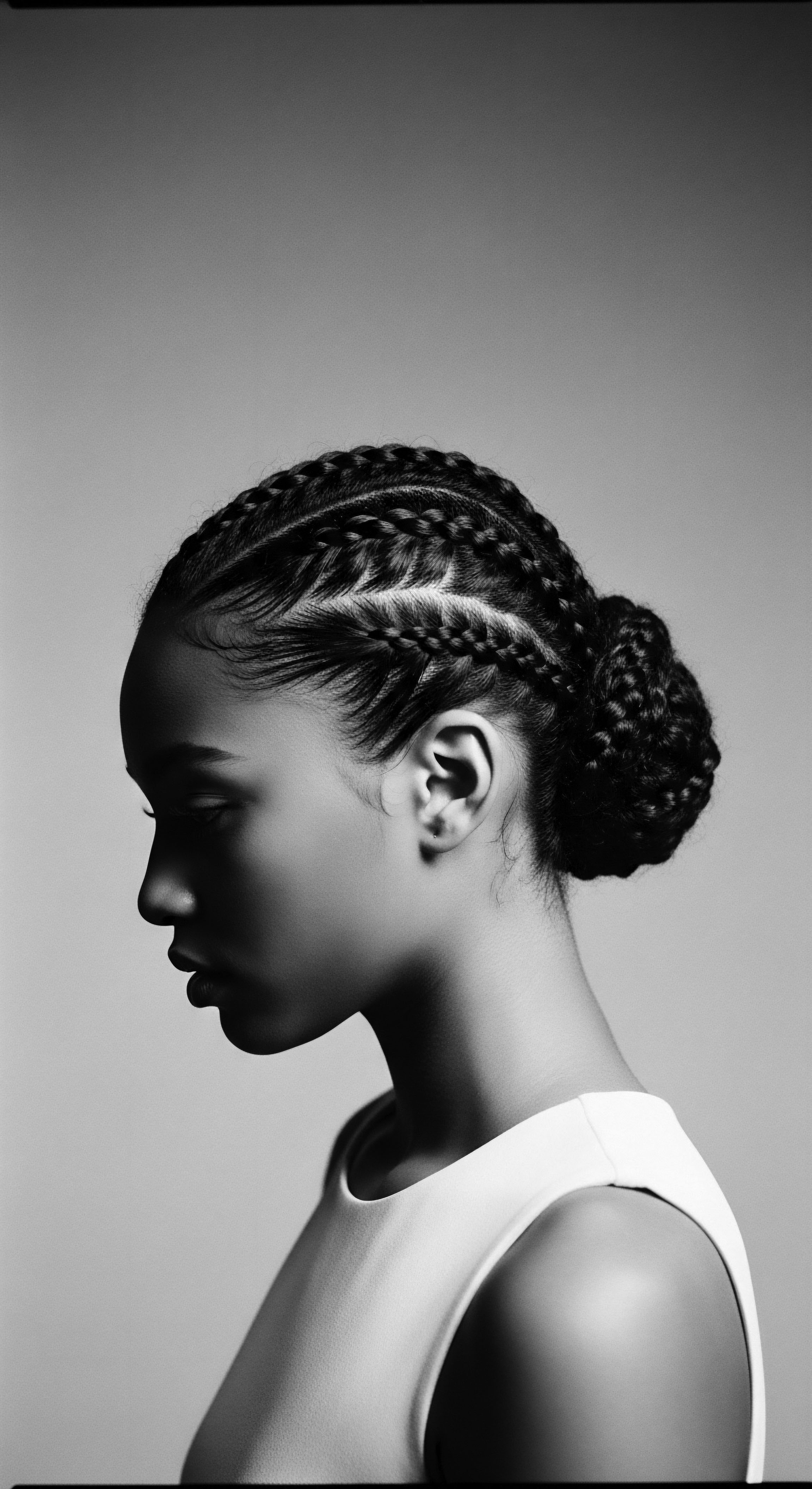
Fundamentals
The very essence of hair health, particularly for textured hair, often finds its grounding in components far smaller than the eye can perceive. Among these, Hair Ceramides stand as foundational elements, representing a vital aspect of a strand’s inherent resilience and enduring beauty. At a fundamental level, ceramides are a class of lipids, which are essentially fatty substances. These molecular guardians reside within the outermost layer of each hair strand, known as the Cuticle.
Picture the hair cuticle as a protective shield, composed of overlapping scales, much like the shingles on a roof. Ceramides serve as the natural “cement” or “glue” that binds these keratin scales together, creating a smooth, unified surface.
This molecular bond ensures the hair’s structural integrity, acting as a crucial barrier against the relentless assault of environmental elements, mechanical stress, and moisture loss. When these ceramide layers are intact, hair exhibits a vibrant sheen, a supple texture, and a remarkable ability to resist damage. The definition of Hair Ceramides, therefore, extends beyond mere chemical composition; it encompasses their profound significance in maintaining the very vitality and protective capabilities of the hair fiber. Without adequate ceramides, the cuticle scales lift, exposing the inner cortex of the hair to vulnerability, leading to dryness, frizz, and breakage.
Hair Ceramides act as the inherent mortar for the cuticle’s cellular structure, safeguarding the strand’s integrity and preserving its intrinsic moisture.
The presence of these lipids within the hair structure enhances its strength and resistance to damage, reinforcing the hair shaft, making it less prone to breakage, split ends, and other forms of mechanical damage. They contribute to the overall integrity of the hair, allowing it to withstand external stresses and maintain its structural form. The ancestral practices of hair care, long before the advent of modern microscopy, intuitively supported the preservation of these vital lipids. Many traditional methods, rich in plant-based oils and butters, provided external lipids that mimicked or supported the function of naturally occurring ceramides, contributing to the hair’s protective envelope.
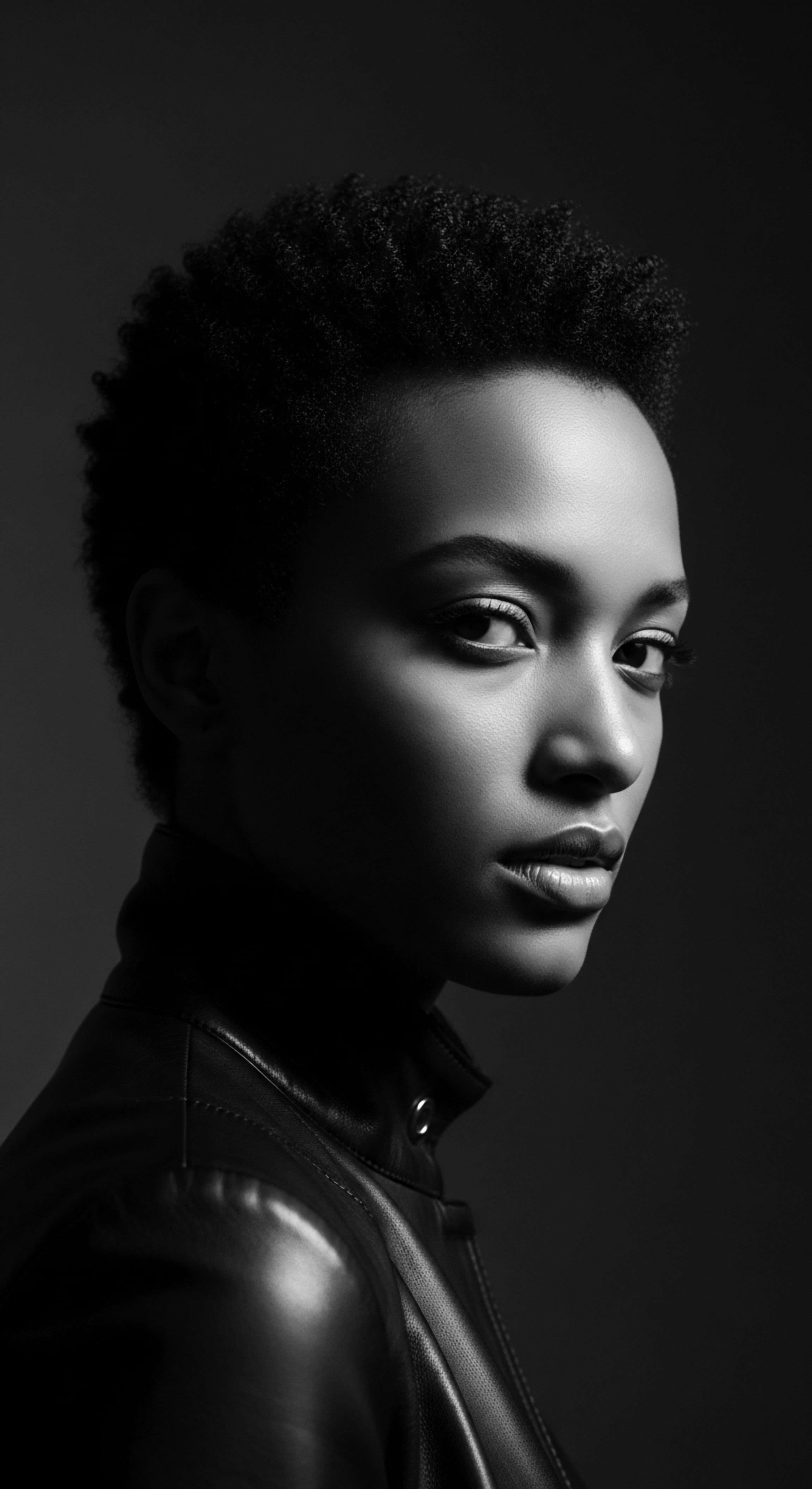
The Hair Strand’s Protective Shield
A deeper look into the hair strand reveals a meticulously organized architecture, where every component plays a role in its overall well-being. The cuticle, the outermost layer, consists of several layers of flat, overlapping cells. These cells are held together by a lipid-rich intercellular cement, of which ceramides are a primary constituent.
This intricate arrangement is particularly significant for textured hair, which, by its very nature, possesses unique structural characteristics. The spirals and curves of coily and curly strands create points of vulnerability where the cuticle can lift more readily, making the ceramide layer even more critical for maintaining strength and preventing moisture escape.
The inherent design of textured hair, with its varying degrees of curl and coil, places a higher demand on the integrity of this lipid barrier. When the ceramide bonds are robust, they ensure that the hair remains sealed, allowing light to reflect uniformly, contributing to the radiant appearance often associated with healthy hair. Conversely, a compromised ceramide layer can lead to a dull, rough texture and a heightened susceptibility to environmental aggressors.
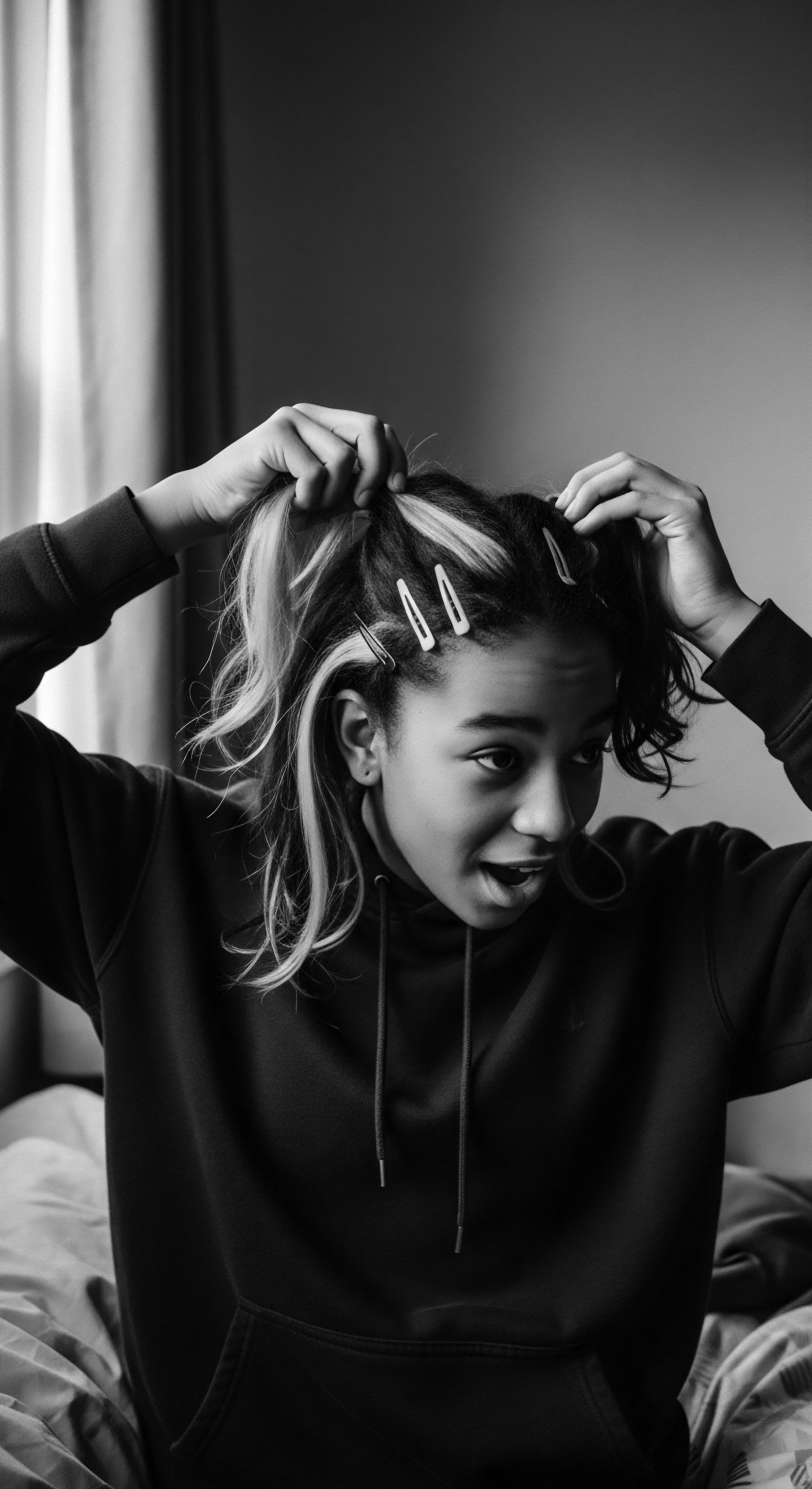
Ancestral Wisdom and Lipid Preservation
Generations of ancestral wisdom, passed down through the hands of caregivers, instinctively understood the need to nourish and protect hair. These practices, though not articulated in scientific terms of ceramides, directly contributed to their preservation and replenishment.
- Plant Oils ❉ Traditional communities frequently applied plant-derived oils, such as shea butter, coconut oil, and olive oil, to the hair and scalp. These natural emollients contain fatty acids and other lipids that can penetrate the hair shaft, providing external reinforcement to the cuticle and supplementing the hair’s natural lipid content. This ritualistic application served as an ancient form of lipid treatment, bolstering the hair’s natural defenses.
- Protective Styles ❉ Intricate braiding, twisting, and coiling styles, deeply rooted in African and diasporic cultures, served a dual purpose ❉ artistic expression and practical protection. By keeping hair bundled and minimizing exposure to the elements and daily manipulation, these styles reduced physical stress on the cuticle, thereby preserving the integrity of the ceramide layers.
- Gentle Cleansing ❉ Ancestral cleansing methods often involved gentler formulations, utilizing natural soaps or herbal rinses that were less stripping than many modern chemical detergents. This approach helped maintain the hair’s natural oils and lipids, preventing the excessive removal of ceramides that can occur with harsh washing.
These practices, honed over centuries, reveal an intuitive understanding of hair’s needs, echoing the modern scientific comprehension of ceramide function. The meaning of Hair Ceramides, from this foundational perspective, is thus intrinsically tied to the legacy of care that has sustained textured hair across generations.

Intermediate
Moving beyond the foundational understanding, the intermediate meaning of Hair Ceramides delves into their specific chemical composition and their dynamic role within the hair fiber. Ceramides are not a single entity; they comprise a diverse family of lipid molecules, each with a distinct structure, yet all united by their capacity to fortify the hair’s outer defenses. These lipids represent a significant portion of the intercellular cement that binds the cuticle cells, acting as a critical sealant that prevents both moisture loss and the ingress of damaging external agents.
The hair shaft’s lipid content, typically around 3% of its total composition, is vital for its barrier function. Within this lipid matrix, ceramides stand out for their structural importance, alongside cholesterol sulfate and sterols. When hair is healthy, the cuticle scales lie flat and cohesive, a direct result of robust ceramide bonds. This smooth surface not only reflects light beautifully, giving hair its characteristic shine, but also confers flexibility and a soft feel.
Hair Ceramides represent a diverse class of lipids, functioning as the vital mortar within the hair cuticle, directly influencing the strand’s luster, flexibility, and resistance to environmental stressors.
Damage from daily aggressions, such as rigorous shampooing, repeated brushing, heat styling, chemical treatments, and UV exposure, gradually compromises this protective lipid envelope. As ceramides are lost, the cuticle becomes fragile and permeable, leaving the inner cortex exposed and the hair structure weakened. The interpretation of Hair Ceramides at this level involves recognizing them as dynamic components, constantly susceptible to depletion, and thus requiring thoughtful replenishment through informed care practices.

The Architecture of Hair Lipids
The hair cuticle, though thin, possesses a complex lipid network. This network includes not only ceramides but also free fatty acids, cholesterol, and a unique branched fatty acid known as 18-methyl eicosanoic acid (18-MEA), which is covalently bound to the cuticle surface. Ceramides, specifically, are crucial intracellular lipids within the cuticle, working in concert with these other fatty components to form a laminated structure. This layered arrangement is what provides the hair with its protective barrier function.
The different types of ceramides, identified by their specific fatty acid chains, contribute to the varied properties of this lipid barrier. While the exact ratio of ceramide classes can differ based on individual genetics, hair types, age, and environmental factors, their collective role in maintaining the hair’s integrity is universal. The inherent structural differences in textured hair, with its often elliptical cross-section and numerous twists and turns, mean that the cuticle cells may not always lie as uniformly flat as in straight hair. This can lead to increased exposure of the intercellular cement, making the ceramide content even more critical for maintaining structural cohesion and preventing moisture loss.
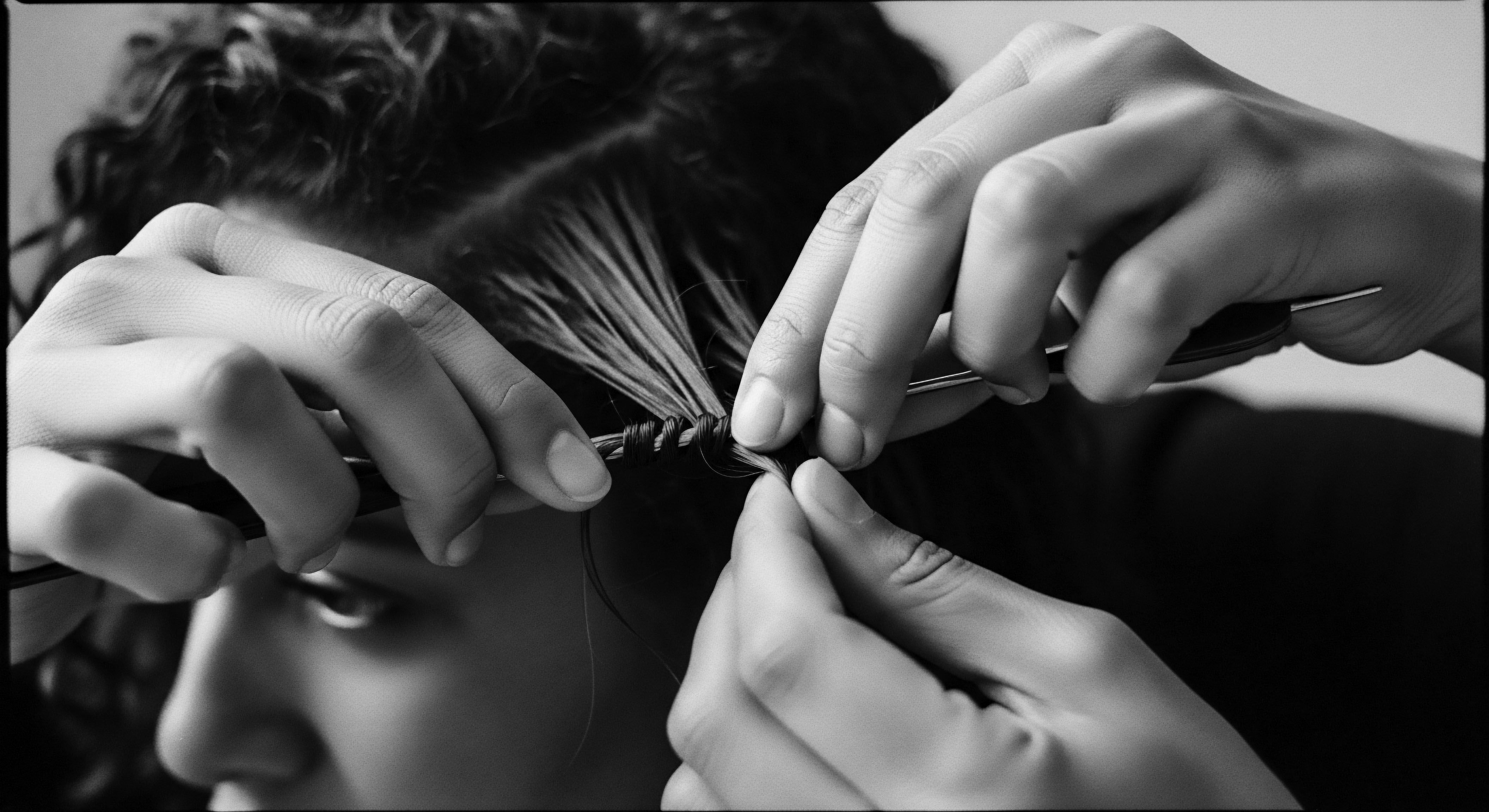
Traditional Care and Ceramide Preservation
Across various ancestral traditions, hair care rituals were deeply intertwined with the cultural fabric, often emphasizing methods that, by their very nature, helped to preserve and replenish hair lipids, including ceramides. These practices were born from generations of observation and a profound connection to natural resources.
The use of specific plant-derived ingredients was not merely for aesthetic appeal but for their demonstrable effects on hair health.
- Shea Butter ❉ Widely utilized across West Africa, Shea Butter (from the Vitellaria paradoxa tree) is rich in fatty acids like oleic and stearic acid. These lipids contribute to hair’s emollience and provide a protective coating, indirectly supporting the hair’s lipid barrier. Its application helped seal moisture within the hair shaft, mimicking the function of ceramides in preventing water evaporation.
- Coconut Oil ❉ A staple in many tropical regions, Coconut Oil is known for its ability to penetrate the hair shaft, offering deep conditioning. Its saturated fatty acids can help reduce protein loss from hair, which in turn helps maintain the structural integrity of the cuticle where ceramides reside.
- Argan Oil ❉ Originating from Morocco, Argan Oil (from Argania spinosa ) has been traditionally used by Berber women for both skin and hair care. Rich in oleic and linoleic acids, as well as tocopherols, it provides nourishing and moisturizing properties that contribute to hair shine and can help prevent hair loss. These lipids offer a protective effect that aligns with ceramide function.
| Traditional Ingredient Shea Butter ( Vitellaria paradoxa ) |
| Geographic Origin/Cultural Context West Africa (e.g. Ghana, Nigeria, Mali) |
| Primary Lipid-Related Benefit Rich in fatty acids; forms a protective barrier, helps retain moisture, provides emollience. |
| Traditional Ingredient Coconut Oil ( Cocos nucifera ) |
| Geographic Origin/Cultural Context Tropical regions (e.g. Caribbean, parts of Africa, Asia) |
| Primary Lipid-Related Benefit Penetrates hair shaft, reduces protein loss, provides deep conditioning, seals cuticles. |
| Traditional Ingredient Argan Oil ( Argania spinosa ) |
| Geographic Origin/Cultural Context Morocco (Berber communities) |
| Primary Lipid-Related Benefit High in oleic and linoleic acids; nourishes, moisturizes, adds shine, supports hair resilience. |
| Traditional Ingredient Kalahari Melon Seed Oil ( Citrullus lanatus ) |
| Geographic Origin/Cultural Context Southern Africa (e.g. Namibia, Botswana) |
| Primary Lipid-Related Benefit Contains linoleic acid; light, non-greasy, moisturizing, contributes to scalp and hair health. |
| Traditional Ingredient These ancestral ingredients, through their lipid profiles, intuitively supported the hair's natural barrier, a practice now understood through the lens of ceramide science. |
The consistent application of these natural resources, often accompanied by gentle detangling and protective styling, fostered an environment where the hair’s intrinsic ceramide content could be preserved and supplemented. This historical perspective highlights a deep, inherited knowledge of hair physiology, long before the scientific terms were coined.
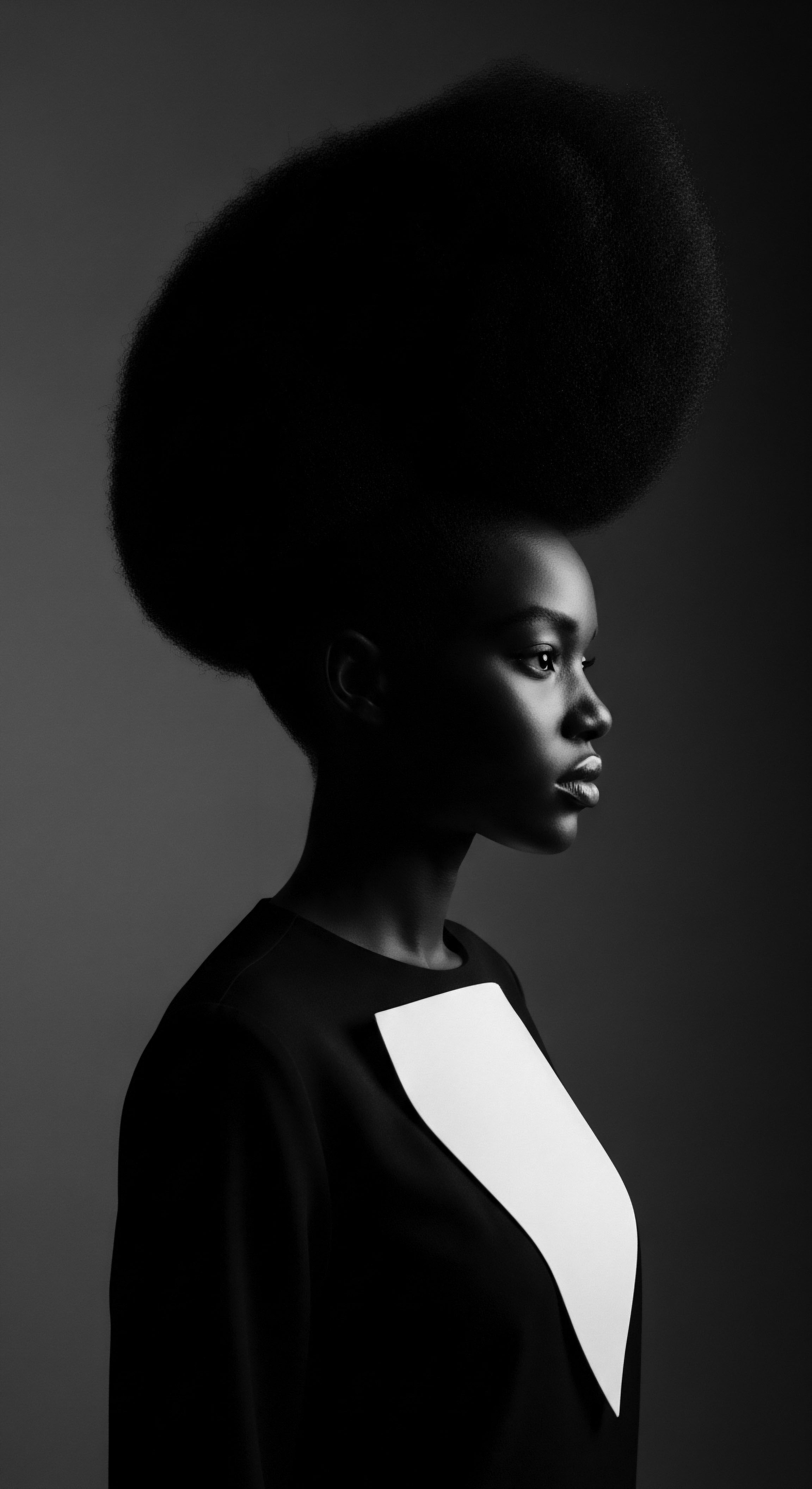
Academic
The academic meaning of Hair Ceramides transcends a mere compositional description, reaching into the intricate biochemical pathways, structural dynamics, and the profound implications for hair fiber mechanics, particularly within the context of textured hair. At this advanced level, Hair Ceramides are understood as a specialized class of Sphingolipids, complex waxy lipid molecules that constitute a significant portion of the intercellular lipid matrix within the hair cuticle and the cell membrane complex (CMC). They are not simply passive fillers; rather, they are highly organized, linear lipid structures that play an active, indispensable role in forming the hair’s primary protective barrier. This barrier is crucial for regulating water content, providing structural cohesion to the overlapping cuticle cells, and shielding the inner cortex from environmental and chemical stressors.
The hair shaft’s lipid composition, while a small percentage of its dry weight (typically 1-9%), holds disproportionate significance for its mechanical properties, shine, and resistance to damage. Among these lipids, ceramides, alongside cholesterol and free fatty acids, are the most abundant and functionally critical. Their presence ensures the integrity of the hair’s hydrophobicity and its ability to retain moisture, directly influencing its flexibility and tensile strength. The loss of these endogenous ceramides, whether due to aging, UV exposure, chemical treatments, or excessive mechanical manipulation, leads to a compromised cuticle, increased porosity, and a cascade of undesirable effects such as dryness, brittleness, and breakage.
Hair Ceramides, as specialized sphingolipids, are pivotal architects of the hair cuticle’s lipid barrier, governing the fiber’s moisture retention, mechanical resilience, and overall vitality through intricate biochemical and structural interactions.
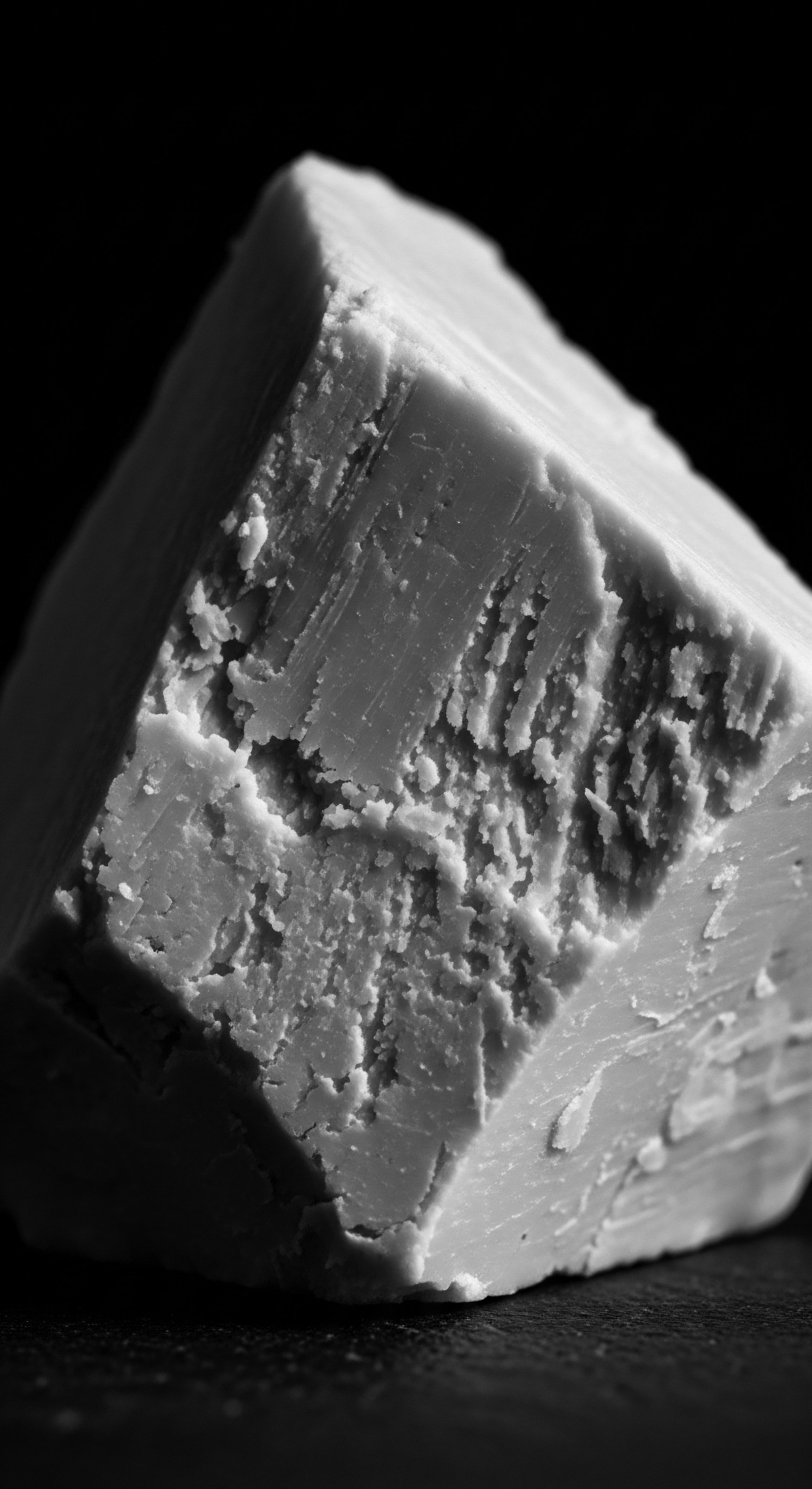
Molecular Architecture and Functional Significance
Hair ceramides are distinguished by their ceramide backbone, a sphingoid base linked to a fatty acid via an amide bond. The diversity within the ceramide family arises from variations in the length and saturation of these fatty acid chains, leading to numerous ceramide species (e.g. CerS2-6, Ceramide NP).
These different species contribute to the specific organization and fluidity of the lipid lamellae within the cuticle, impacting the barrier’s efficacy. The synthesis of these lipids occurs within the hair follicle, with their precise composition and organization being critical for the establishment and maintenance of a functional hair follicle stem cell compartment, as evidenced by studies on ceramide synthase 4 (CerS4).
The unique helical and coiled structure of textured hair, particularly Afro-textured hair, presents distinct biophysical challenges. While Afro-textured hair generally exhibits a higher overall lipid content compared to European and Asian hair types, its characteristic curvature creates more points of structural weakness and areas where the cuticle is naturally lifted. This inherent morphology, despite a higher lipid volume, can lead to increased vulnerability to moisture loss and external damage if the ceramide-rich intercellular cement is compromised.
Research has indicated that African hair, while having more internal lipids, may possess a smaller amount of ceramides relative to certain other lipid classes, and these lipids can be more disordered, influencing permeability. This subtle yet significant difference underscores the heightened importance of maintaining and replenishing ceramides in textured hair to counteract its structural predispositions to dryness and breakage.
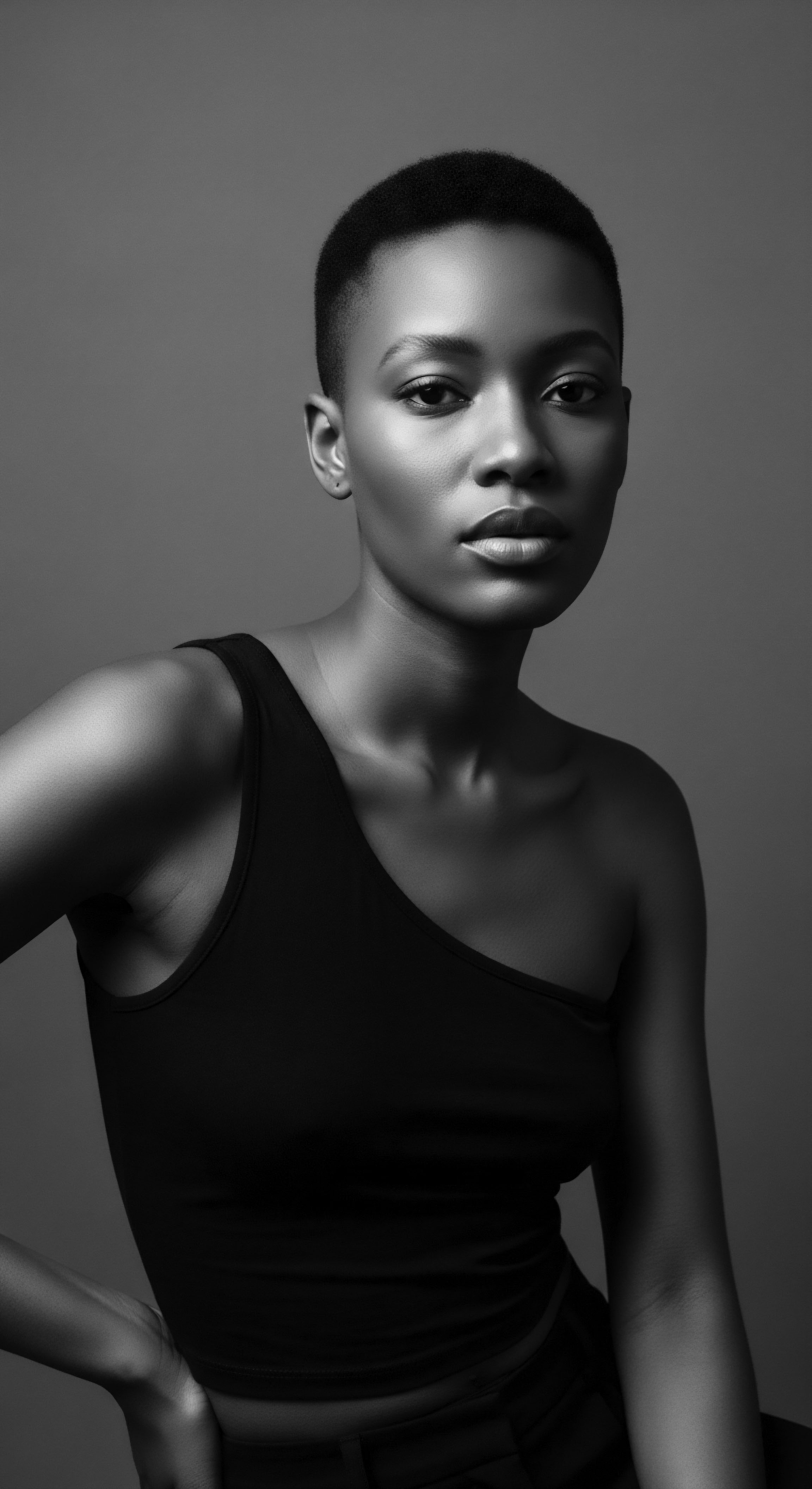
Historical Practices as Unconscious Biochemistry
The profound wisdom embedded in ancestral hair care practices, particularly within Black and mixed-race communities, represents a form of applied biochemistry long before the scientific nomenclature existed. These rituals, often communal and steeped in spiritual significance, were, in essence, sophisticated systems for maintaining the hair’s lipid barrier, thereby preserving its ceramides and overall health.
Consider the Mbalantu women of Namibia , a powerful example of ancestral ingenuity in hair care. For centuries, these women have cultivated exceptionally long, resilient hair, a hallmark of their identity and cultural pride. Their renowned hair ritual involves a mixture known as Otjize, traditionally composed of ochre, butterfat (often from cow’s milk), and aromatic herbs. This meticulously prepared paste is applied to the hair, forming thick, protective dreadlock-like strands.
While the Mbalantu women were certainly not aware of “ceramides” as distinct lipid molecules, their consistent application of butterfat, rich in saturated and monounsaturated fatty acids, would have provided a substantial external lipid layer. This layer would have acted as a biomimetic shield, closely mirroring the function of natural ceramides by sealing the cuticle, preventing moisture evaporation, and physically protecting the hair shaft from environmental stressors like sun and dust. The fatty acids in the butterfat could also serve as precursors for ceramide synthesis or directly integrate into the hair’s lipid matrix, bolstering its natural defenses.
This traditional practice, deeply rooted in cultural expression and communal bonding, serves as a compelling case study. It demonstrates how indigenous knowledge systems developed highly effective hair care regimens that, from a modern academic perspective, implicitly supported the biochemical integrity of the hair fiber, including the preservation of its vital ceramide content. The meticulous care, the regular reapplication, and the protective styling inherent in the Mbalantu tradition collectively created an optimal environment for hair health, allowing strands to flourish and retain their strength over extended periods. This enduring legacy speaks to a sophisticated, embodied understanding of hair’s needs, passed down through generations.
The societal implications of hair health within Black and mixed-race communities cannot be overstated. Historically, hair has served as a powerful symbol of identity, status, and resistance. During periods of enslavement and colonialism, efforts were made to strip individuals of their traditional hair practices and impose Eurocentric beauty standards, often leading to the widespread use of harsh chemical straighteners that severely damaged the hair’s natural structure and depleted its ceramides. The “hot comb era” and the subsequent reliance on relaxers, while offering a means of conformity, often came at a significant cost to hair health, causing breakage and fragility.
The contemporary natural hair movement represents a reclamation of ancestral wisdom and a profound assertion of identity. This movement encourages a return to practices that honor the natural texture of hair and support its intrinsic health, often by emphasizing gentle care, moisture retention, and the use of natural oils and butters – practices that inherently aid in ceramide preservation. Understanding the scientific basis of ceramides provides a modern validation for these time-honored traditions, bridging the gap between ancestral knowledge and contemporary scientific understanding.
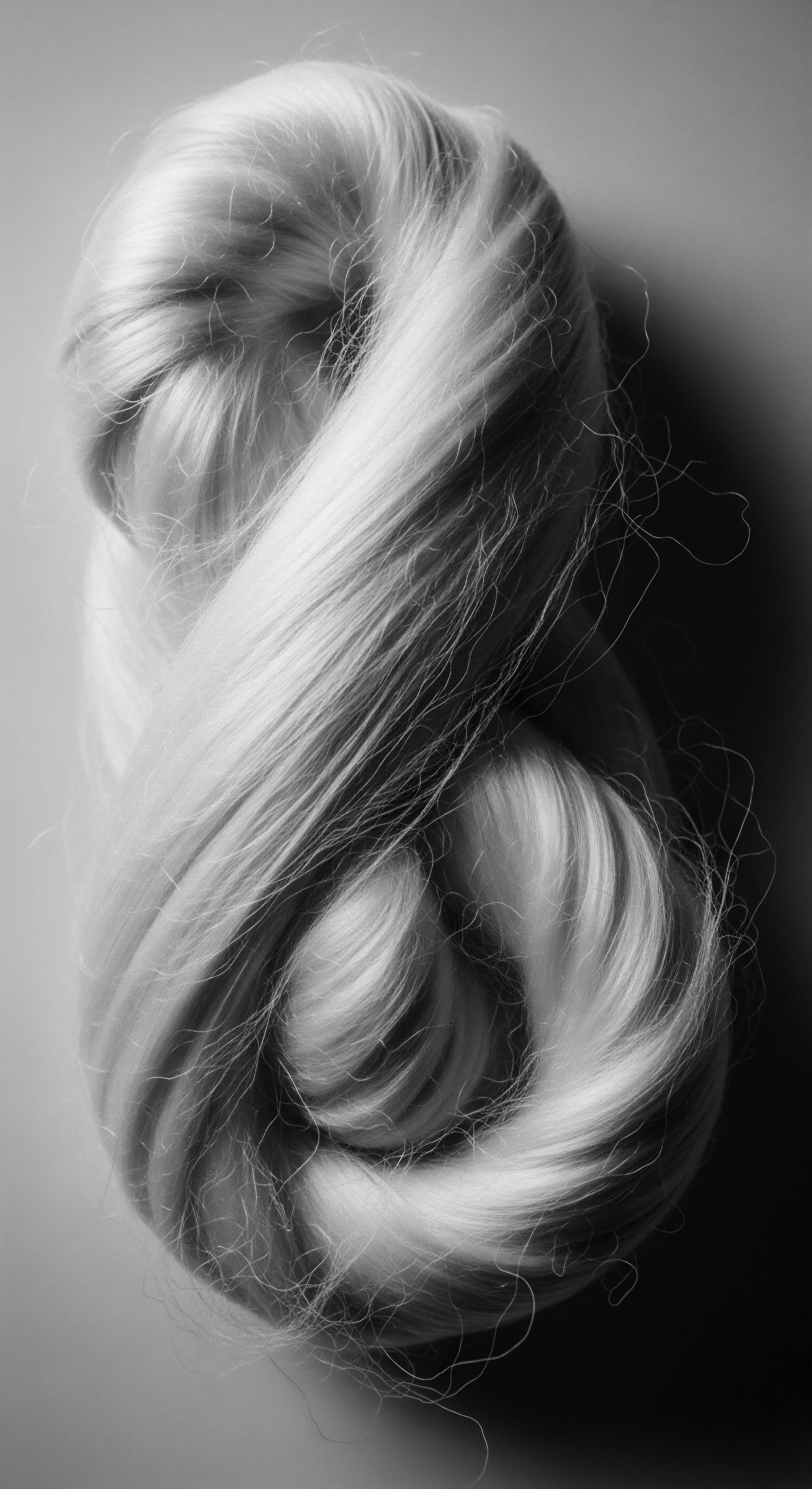
Ceramide Dynamics and Hair Resilience
The dynamics of ceramide loss and replenishment are central to maintaining hair resilience. Endogenous ceramides are continuously produced within the hair follicle, forming part of the internal lipid structure of the hair shaft. However, external factors can significantly accelerate their depletion.
- Chemical Treatments ❉ Processes like coloring, bleaching, and relaxing involve strong chemicals that can disrupt the hair’s disulfide bonds and, crucially, degrade the lipid matrix of the cuticle, leading to significant ceramide loss.
- Heat Styling ❉ High temperatures from blow dryers, flat irons, and curling wands can vaporize water and lipids from the hair, damaging the cuticle and diminishing ceramide levels.
- Environmental Stressors ❉ UV radiation from the sun is a known culprit in depleting hair ceramides, leading to raised cuticles and increased moisture loss. Pollution and hard water can also contribute to the degradation of the hair’s lipid barrier.
- Mechanical Abrasion ❉ Aggressive brushing, tight styling, and friction against fabrics can physically lift and chip away at the cuticle scales, exposing the ceramide-rich intercellular cement to further damage.
The academic exploration of Hair Ceramides therefore extends to strategies for their restoration and protection. Biomimetic ceramides, synthesized to closely resemble the hair’s natural lipids, are now incorporated into advanced hair care formulations. These pseudo-ceramides can insert themselves into the compromised lipid cement, replacing missing lipids and helping to re-weld the cuticle scales, thereby restoring the hair’s barrier function, reducing porosity, and enhancing its strength and shine.
| Hair Type African Hair |
| Overall Lipid Content Highest (e.g. 1.7x more internal lipids than other ethnicities) |
| Ceramide Content (Relative) Lower amount of ceramides relative to some other lipid classes (e.g. cholesterol esters, cholesterol sulfate) |
| Lipid Order/Permeability More disordered lipids, leading to higher permeability to treatments. |
| Hair Type European Hair |
| Overall Lipid Content Intermediate lipid content |
| Ceramide Content (Relative) Higher relative amount of free fatty acids. |
| Lipid Order/Permeability Higher lipid order, lower permeability. |
| Hair Type Asian Hair |
| Overall Lipid Content Lowest lipid content |
| Ceramide Content (Relative) Not specifically detailed in relative ceramide amounts from provided data, but overall lowest lipid content. |
| Lipid Order/Permeability Higher lipid order, lower permeability. |
| Hair Type This table highlights variations in lipid composition and organization across different hair types, underscoring the need for tailored care strategies that consider the unique biophysical properties of textured hair, particularly concerning ceramide maintenance. |
The recognition that Afro-textured hair, despite its higher overall lipid content, may have a specific ceramide profile that contributes to its unique needs, shifts the focus from a one-size-fits-all approach to hair care. It necessitates a nuanced understanding that acknowledges both the strengths and vulnerabilities inherent in its structure. This academic perspective, grounded in rigorous scientific inquiry, serves to validate and deepen the appreciation for the traditional practices that have long sought to fortify and adorn textured hair, ensuring its health and celebrating its inherent splendor. The synthesis of historical wisdom with modern scientific understanding allows for a more holistic and culturally attuned approach to hair wellness.
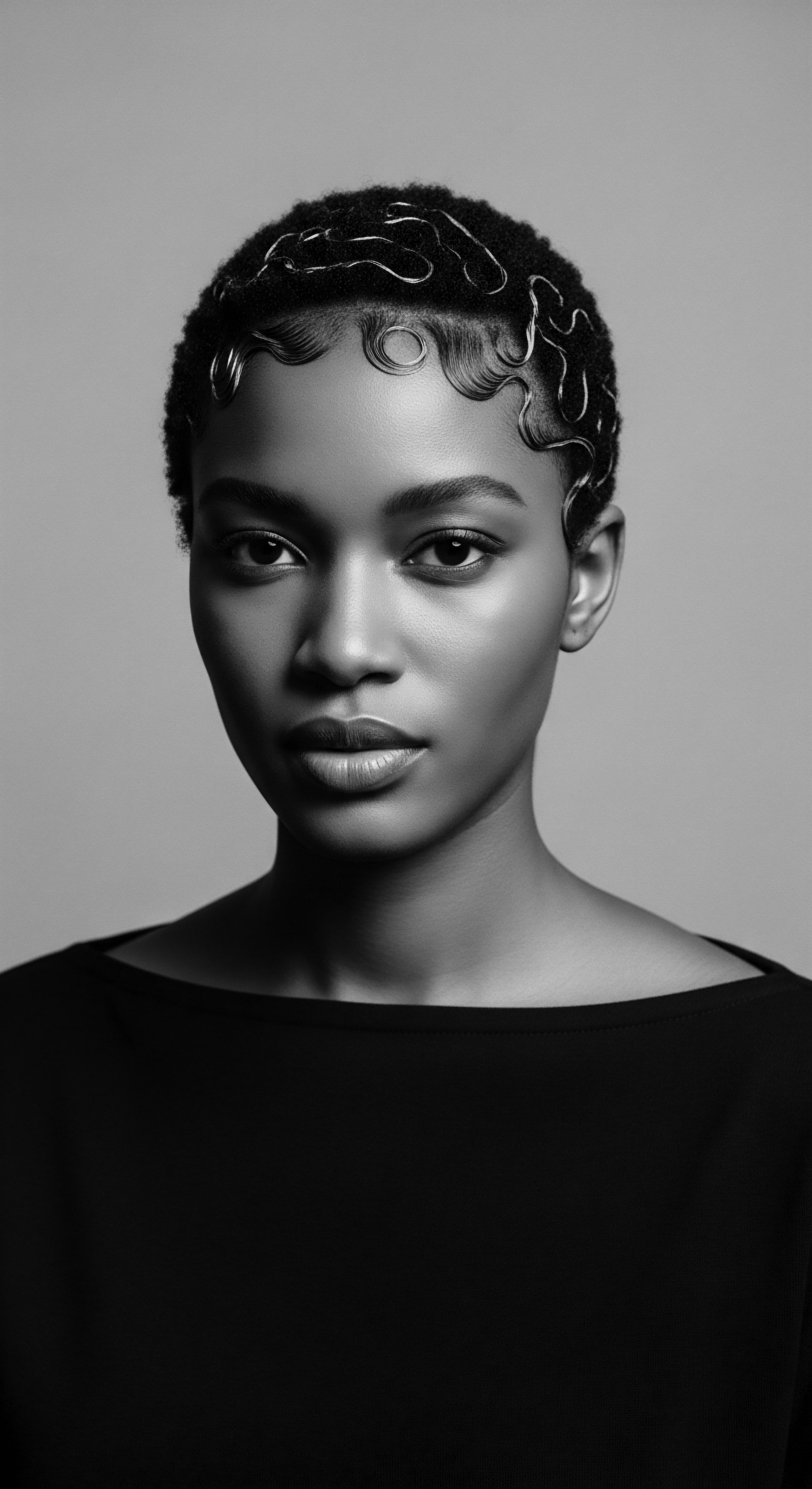
Reflection on the Heritage of Hair Ceramides
The journey through the intricate world of Hair Ceramides, from their elemental biology to their profound significance within textured hair heritage, is a testament to the enduring wisdom woven into the fabric of human experience. It is a narrative that begins with the microscopic architecture of a single strand and expands to encompass the vast, vibrant tapestry of ancestral traditions, community bonds, and personal identity. The ‘Soul of a Strand’ ethos finds its deepest resonance here, affirming that hair is never merely a biological filament; it is a living archive, holding stories of resilience, beauty, and inherited knowledge.
For Black and mixed-race hair experiences, the understanding of ceramides offers a scientific affirmation of what generations intuitively knew ❉ that nurturing the hair’s protective barrier is paramount. The meticulous oiling rituals, the deliberate protective styling, the gentle handling – these were not simply acts of grooming. They were acts of preservation, acts of defiance against societal pressures, and acts of profound connection to a lineage that understood hair as a sacred extension of self. The historical arc, from the communal hair care practices of pre-colonial Africa to the contemporary natural hair movement, reveals a continuous thread of seeking wellness and asserting identity through hair.
The enduring meaning of Hair Ceramides is thus a layered one. It is a biological fact, certainly, but also a metaphor for the strength found in unity, the protection derived from careful attention, and the vibrant beauty that radiates from a foundation of well-being. This understanding compels us to look at our hair not just as something to be styled, but as a cherished heirloom, a living legacy deserving of reverence and informed care. The echoes from the source, the tender thread of tradition, and the unbound helix of future possibilities all converge in the understanding of these vital lipids, reminding us that in caring for our strands, we honor our past, affirm our present, and shape a future where every texture is celebrated in its full, inherent glory.
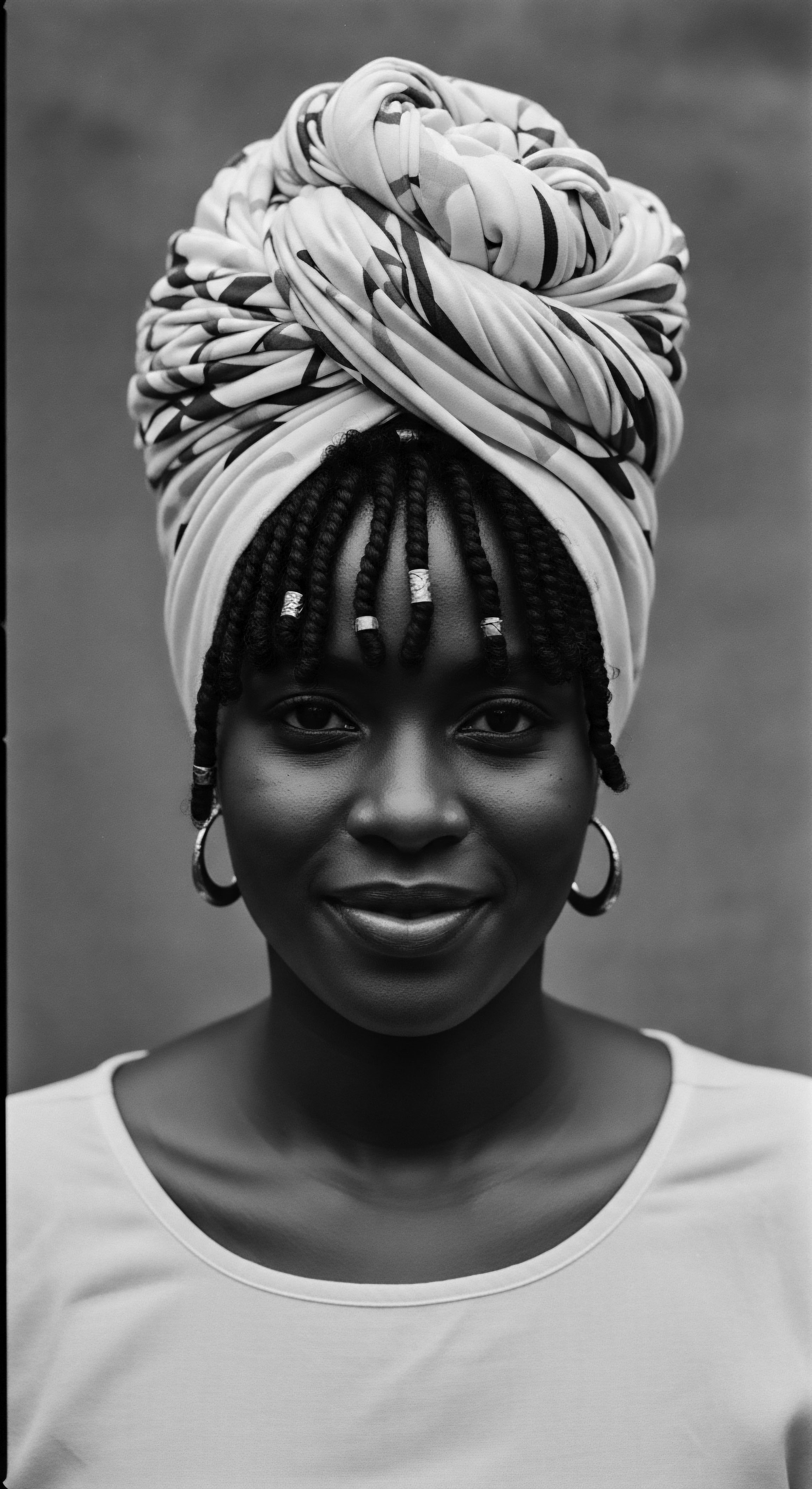
References
- Coderch, L. de la Maza, A. Manich, A. M. & Parra, J. L. (2012). Keratins and lipids in ethnic hair. International Journal of Cosmetic Science, 34(3), 260-267.
- Davis, C. & Oduguwa, K. (2025). Hair Care Practices from the Diaspora ❉ A Look at Africa, America, and Europe .
- Giacomelli, L. et al. (2023). Hair Lipid Structure ❉ Effect of Surfactants. Cosmetics, 10(4), 104.
- Maharaj, C. (2025). Beyond the roots ❉ exploring the link between black hair and mental health. TRIYBE.
- Mbilishaka, A. (2023). The Politics of Black Hair. Psychology Today.
- Nascimento, M. S. et al. (2024). Cosmetopoeia of African Plants in Hair Treatment and Care ❉ Topical Nutrition and the Antidiabetic Connection?. Pharmaceuticals, 17(2), 209.
- Oforiwa, A. (2023). The History and Culture of African Natural Hair ❉ From Ancient Times to Modern Trends. AMAKA Studio.
- Richena, M. & Rezende, C. A. (2023). Research Progress in Composition, Classification and Influencing Factors of Hair. Asian Journal of Beauty and Cosmetology, 21(3), 365-373.
- Singh, G. (2024). Top 10 Benefits of Ceramides for Skin & Hair. Buy Wow.
- Stéphanie, PhD. (2023). The benefits of ceramides for hair. Typology.
- Sugawara, Y. et al. (2014). Synthesized Ceramide Induces Growth of Dermal Papilla Cells with Potential Contribution to Hair Growth. BioMed Research International, 2014, 1-8.
- Wallace, J. (2020). Honoring the Spiritual Legacy, Resiliency, & Healing Power of Our Ancestors Through Indigenous Customary Hair Traditions. Cultural Survival.
- Yu, J. et al. (2025). Sphingolipid metabolism orchestrates establishment of the hair follicle stem cell compartment. The Journal of Cell Biology, 224(4), e202306121.
